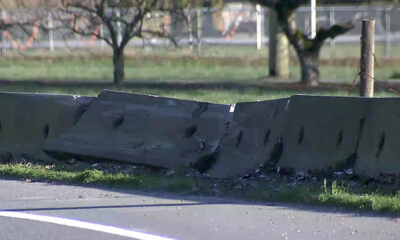Local News
Vancouver expands drug inhalation sites in Downtown Eastside

Vancouver city council has approved changes to local health bylaws that will allow two new indoor supervised drug inhalation sites to open in the Downtown Eastside (DTES) — a move some experts say is urgently needed to respond to a shift in how people are using toxic street drugs.
The amendment, passed Tuesday, clears one of the final legal obstacles for the BC Centre for Excellence in HIV/AIDS to begin operations at its Hope to Health clinic and for Vancouver Coastal Health to launch a smaller pilot site at a supportive housing building operated by RainCity Housing.
Both sites will provide access to supervised consumption services for people who smoke illicit substances.
It’s welcome news for Kora DeBeck, a professor at SFU’s School of Public Policy, who says the majority of existing harm-reduction programs in the DTES have largely focused on injection drug use.
“We know so many people have transitioned from injection drug use to smoking with fentanyl,” said DeBeck.
While Vancouver currently has five supervised inhalation sites, nearly all of them are outdoors — typically in tents or temporary shelters — and often lack adequate protections.
The six new indoor booths at Hope to Health — each equipped with ventilation, seating, and communication systems — will not only provide a safer environment but also enable health-care staff to respond to overdoses and connect clients with broader supports.
“Ensuring that we have the most opportunities to bring folks off the street, and to then have opportunities for more connection with health and social services in a way of keeping them under the public health umbrella is very important,” DeBeck told 1130 NewsRadio.
“It’s very aligned with research and evidence.”
DeBeck also firmly rejected the notion that harm-reduction services could encourage drug use, calling that belief “unfounded” and not supported by credible evidence.
“When the supervised injection site Insite opened, it underwent rigorous evaluation and scientific study to see if it attracted people from other areas or led to more people starting to inject drugs. And we just don’t see that [evidence] bearing out.”
Nationally, indoor supervised drug inhalation sites are quite rare.
Toronto’s Casey House and Victoria’s Harbour supervised consumption site are two of the few facilities that allow for inhalation inside — and only in limited circumstances.
In Vancouver, Health Canada had previously determined that a 2023 city resolution not to enforce smoking bylaws at the Hope to Health site was insufficient.
Tuesday’s bylaw amendment provides the explicit exemption needed to proceed.
The second site, at the Budzey Building supportive housing facility, will operate as a six-to-12-month pilot.
It is not a public overdose prevention site and will be limited to residents.
Vancouver Coastal Health says the goal is to determine whether indoor inhalation services can reduce overdoses while protecting staff and residents from secondhand smoke.
Since B.C. declared the toxic drug crisis a public health emergency in 2016, more than 16,000 people have lost their lives to illicit drug overdoses — with nearly one-third of those deaths occurring in Vancouver.












